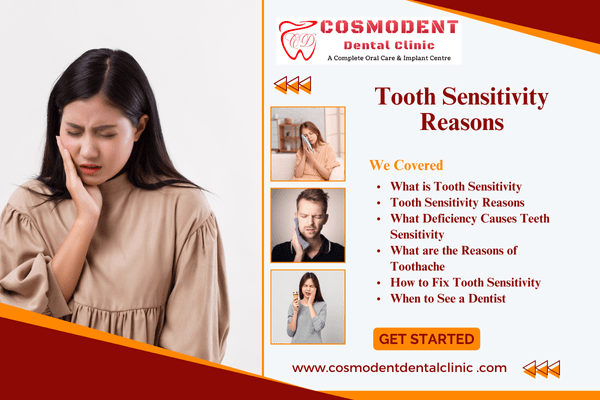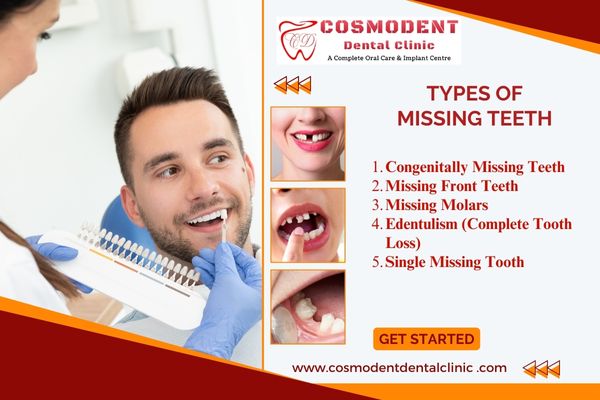Introduction:
Dental impactions are a common dental problem that many human beings face at a few unspecified times in their lives. An impaction takes place at the same time as a tooth fails to absolutely erupt through the gum line, becoming caught in the jawbone. This can occur for an entire lot of reasons, consisting of overcrowding within the mouth, the enamel growing in at an angle, or incorrect positioning of the tooth.
There are different types of dental impacts, each presenting a unique and demanding situation and causing headaches. From understanding tooth impactions to canine impactions, knowledge of the different types of dental impactions is critical for correct analysis and treatment. In this blog, we are able to explore the different types of dental impactions, their reasons, and the treatment alternatives to be had.
Different types of dental impacts include:
A) Wisdom Teeth Impactions:
Wisdom teeth, additionally known as 0.33 molars, are the last set of molars to erupt within the back of the mouth. They typically emerge between the ages of 17 and 25, but no longer anybody develops understanding enamel. When wisdom teeth do emerge, they are able to frequently cause problems due to their past eruptions and function behind the mouth.
Wisdom teeth impactions rise up while the third molars become trapped in the jawbone or fail to absolutely emerge through the gum line. This can bring about ache, swelling, contamination, and harm to the surrounding tooth. There are four unique types of attention teeth impactions:
-
- Soft tissue impaction: The cognizance enamel is trapped beneath the gum line and has now not erupted via the tissue.
- Partial bony impaction: The expertise tooth has partially erupted via the gum line but remains trapped inside the jawbone.
- Complete bony impaction: The understanding teeth are absolutely encased in the jawbone and have not erupted through the gum line.
- Horizontal impaction: The expertise enamel is angled horizontally rather than vertically, causing it to end up stuck in the jawbone.
Treatment for different types of dental impactions commonly entails extraction. In a few instances, the enamel may be able to be virtually or partly eliminated via an easy surgical treatment. However, in instances of whole bony impaction, more complicated surgical strategies can be required to do away with the impacted enamel.
B) Canine Impactions:
Canine teeth, also known as cuspids or eyeteeth, are the pointed enamel placed subsequent to the incisors in each of the higher and lower jaws. Canine impactions arise even as the tooth fails to erupt properly through the gum line and emerges trapped inside the jawbone. This can occur for plenty of reasons, which encompass overcrowding in the mouth, the enamel developing at an angle, or incorrect positioning of the tooth.
There are three different types of canine impacts:
-
- Palatal impaction: The dog tooth is trapped in the roof of the mouth and fails to emerge via the gum line.
- Buccal impaction: The canine enamel is angled closer to the cheek and will become stuck in the jawbone.
- Labial impaction: The canine enamel is angled towards the lips and becomes trapped within the jawbone.
Canine impactions can cause pain, swelling, infection, and harm to surrounding enamel. They can also lead to problems with the right alignment of the enamel and affect the overall characteristics of the mouth. Treatment for canine impactions normally entails extraction, which may require a surgical procedure to take away the impacted tooth.
C) Premolar Impactions:
Premolars, additionally called bicuspids, are the enamel placed on many of the canines and molars in each of the top and lower jaws. Premolar impactions occur when one or more premolars fail to erupt well through the gum line and turn out to be trapped in the jawbone. This can display up for numerous motives, which include overcrowding inside the mouth, the teeth developing in an attitude, or mistaken positioning of the teeth.
There are two different types of premolar impactions:
-
- Transposition impaction: The premolar teeth are placed in such a manner that they overlap with any other teeth, preventing them from erupting nicely.
- Ectopic impaction: The premolar tooth is placed in a bizarre function within the jawbone, making it hard for it to emerge through the gum line.
Premolar impactions can cause ache, swelling, contamination, and damage to the surrounding tooth. They can also cause trouble with the proper alignment of the teeth and have an effect on the general characteristics of the mouth. Treatment for premolar impactions normally involves extraction, which may additionally require a surgical treatment to remove the impacted enamel.
D) Incisor Impactions:
Incisors are the front teeth located in both the top and lower jaws. Incisor impactions arise when one or more incisors fail to erupt well through the gum line and come to be trapped within the jawbone. This can take place for a number of reasons, including overcrowding in the mouth, the enamel growing in at an angle, or unsuitable positioning of the tooth.
There are two different types of incisor impactions:
-
- Mesiodens impaction: The incisor enamel is positioned among the crucial incisors and fails to erupt nicely.
- Lateral incisor impaction: The lateral incisor enamel is placed next to the vital incisors and becomes trapped in the jawbone.
Incisor impactions can cause pain, swelling, contamination, and harm to surrounding enamel. They can also lead to troubles with the right alignment of the tooth and affect the overall function of the mouth. Treatment for incisor impactions generally involves extraction, which may also require surgery to eliminate the impacted enamel.
Conclusion:
Understanding the different types of dental impactions is crucial for the correct prognosis and remedy. From knowledge enamel impactions, each kind provides unique challenges and ability headaches. If you’re experiencing an ache, swelling, or problem with your teeth, it’s crucial to see a dentist for an assessment. With early detection and a suitable remedy, dental impactions may be efficaciously controlled, restoring proper function and health in your mouth.








